Huawei continues to tread the scenes of Windows laptops with models for all needs and pockets. Huawei MateBook X Pro 2020 is the top of the range, which again this year proves to be a particularly well studied notebook, capable of offering a satisfying and premium experience. So premium that you will only want it to do something more.
Design
Huawei MateBook X Pro 2020 does not adopt special design solutions. It is not rotating; on the contrary, the screen does not bend over approximately 45°, and does not have particularly distinguishable design elements. It is just a nice block of metal, which gives the notebook great solidity, zero crunches, and minimal bending by twisting the screen. The bezels around the display are very small, so as to offer you 91% screen / surface ratio. This is possible thanks also to the absence of a webcam, instead placed in a key hidden in the keyboard, in the middle of F6 and F7. It is a solution that Huawei adopts on many of its models (Honor included), which privileges privacy more than practicality.
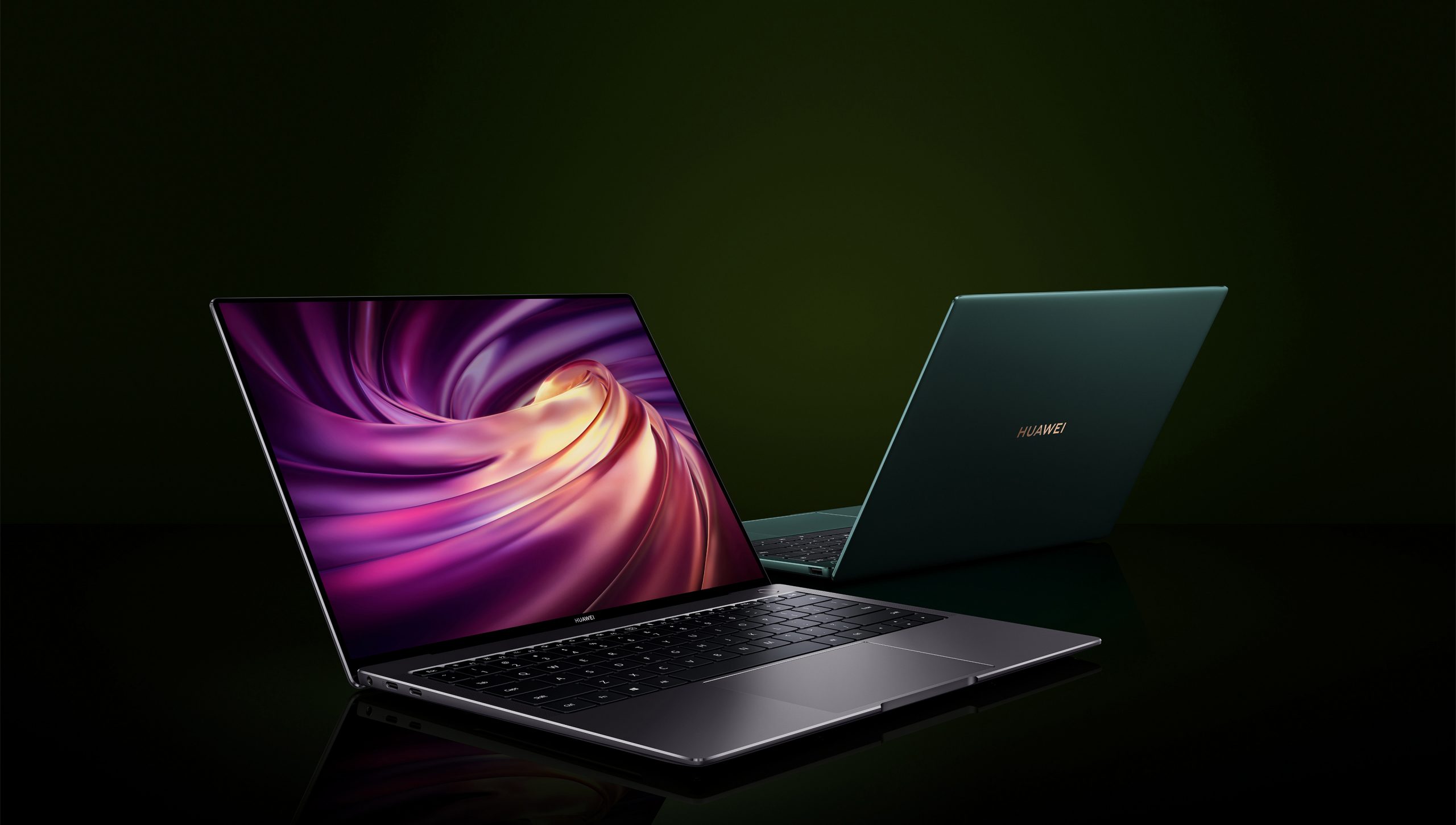
The thickness does not reach 15 mm and the weight has stopped at 1,331 grams on the plate of our scale. There are two USB-C and a USB-A. We would not have complained too much about the absence of the latter, since we are now in the middle of 2020, but we are sorry that there is no SD reader, the absence of which we will continue to complain about on “pro” laptops like this.
The power button is also a fingerprint reader, and is located outside the keyboard, so as not to alter the layout of the latter. Hidden but present, 4 speakers and 4 microphones. After all, the experience wants to be MacBook level, and audio is one of the aspects that Apple never neglects. After all, those dotted grids on the sides of the keyboard speak for themselves, and they testify how thick the body of the MateBook X Pro is (if it had been too thin, it would not have been possible to pierce it like that).
Keyboard and Touchpad
If there is one thing that pushes you to use a laptop willingly, they are good input systems, and here we are great. Large keys, short stroke, not too soft but not too hard actuation. Get to know very quickly with the keyboard of this Huawei MateBook X Pro 2020, and just as quickly you will reach your maximum level of writing speed. The only flaw is perhaps the excessive proximity between the various keys, which sometimes, especially at the beginning, led us to make typing errors. However, the learning curve remains short.
It should also be noted that the directional arrows are not inverted T, since left and right have the size of the other key caps. Some people don’t like this solution; personally it doesn’t bother me, I prefer it. A matter of taste, obviously. Speaking of the directional arrows, these are also used for start / end and page up / down, in conjunction with pressing the fn key, although this second function is not written anywhere.
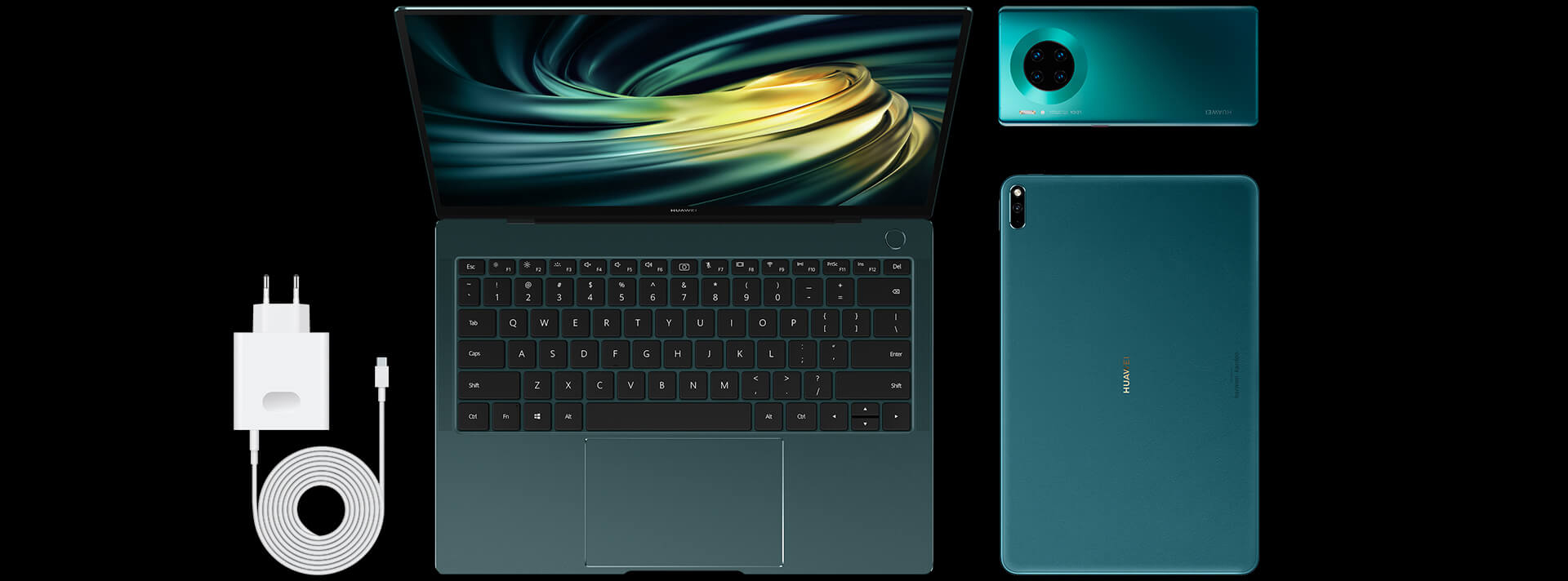
The toggles are the first bar, instead of the function keys, but you can invert this mode by pressing fn once (a small LED at the top right of the same key will indicate the activation of this function). Interesting detail: even with Fn “locked”, the directional arrows continue to function as such, and do not become start / end and page up / down.
There is also a good backlight, adjustable on two levels and quite visible even in conditions of not total darkness, although its maximum intensity is not too high. In any case, it is uniform, not annoying, and strictly white on every single key.
Like the keyboard, the touchpad is also pleasantly balanced. The click is not soundless but not too dry. The actuation force is not excessively soft, but not too heavy, and the abundant 3/4 of the touchpad surface are clickable. Obviously, there is no shortage of Windows precision drivers, and above all the available surface is really large: not really at the MacBook level, but higher than most competing laptops.
Hardware and Benchmarks
Huawei MateBook X Pro 2020 is available in only two configurations. We have tried the most powerful, briefly summarized below. The other variant has i5 processor and half of storage space.
- SCREEN: 13.9″ LTPS 3000 X 2000 pixel touch
- CPU: Intel Core i7-10510U
- GPU: Nvidia GeForce MX250
- RAM: 16 GB LPDDR3
- INTERNAL MEMORY: 1 TB NVMe PCIe SSD
- POP-UP WEBCAM: 720p @ 30fps.
- WIRELESS CONNECTIVITY: Wi-Fi ac dual band, Bluetooth 5.0
- PORTS: 2x USB-C (with DisplayPort and Power Delivery), USB-A 3.0, 3.5mm jack
- BATTERY: 56 Wh
- WEIGHT:33 Kg
- OS: Windows 10 Home
In choosing between Comet and Ice Lake, Huawei preferred the former, a choice that then forced the company to use a discrete GPU, albeit low-end, such as the MX250. Adopting an Ice Lake there would not have been too much need, since the GPUs included in this type of processors are definitely more powerful than those of the Comet Lake, and more or less on par with Nvidia’s MX cards. In short, it is a questionable decision, which also complicates thermal management a bit, which as we will see is not impeccable.
Other notes that we could make concern LPDDR3 RAM and the absence of Wi-Fi 6 and an SD card reader. A USB-C dongle with VGA, HDMI and USB-A is also included in the package, making the USB-A included in the laptop even more redundant, which could be replaced by a memory card reader, considering that such a notebook it also aims at photographers and video makers on the move.
Finally, given the importance that Huawei gives to the webcam, hidden in its dedicated button, it is a pity that this is only a classic 1 megapixel camera, all the more from a brand that in the smartphone world is famous for its cameras.
Last note about the absence of Thunderbolt 3. In the official specifications, there is in fact no mention, and on the notebook, there is no relative symbol, but as confirmed also by notebookcheck, the USB-C further forward is in fact a Thunderbolt 3, only that Huawei has not purchased the license to be able to bear this trademark.
| MateBook X Pro | Surface Laptop 3 | Dell XPS 13 (7390) | |
| 3DMark | 930 (Time Spy) | 875 (Time Spy) | 490 (Time Spy) |
| PCMark 10 | 3,561 | 3,556 | 3,065 |
| GeekBench 4 single-core | 5,500 | 5,450 | 5,190 |
| GeekBench 4 multi-core | 17,413 | 17,560 | 17,500 |
| GeekBench 4 GPU | 43,585 (MX250) | 36,200 (Iris Plus) | 25,000 (Intel UHD) |
| Crystal Disk reading | 3,420 MB/s | 2,035 MB/s | 3,100 MB/s |
| Crystal Disk writing | 3,003 MB/s | 840 MB/s | 2,843 MB/s |
Surface Laptop 3 is an almost natural rival to this HuaweiMateBook X Pro 2020. Both are among the few notebooks with a 3:2 screen, and both target a similar audience. The main difference lies in the processor, which in the case of the Laptop 3 in the table is an i5-1035G7 or an Ice Lake accompanied by 8 GB of RAM. And as you can see, the differences from a playful point of view are few, with the Time Spy test which presents only a slight detachment in favor of the MX250. The performance of the two processors, on the other hand, are equivalent, as Geekbench points out, which however clearly rewards the Nvidia GPU, which is better on paper than it is in practice. This confirms what we said before about the Comet Lake / Ice Lake choice.
XPS 13 instead mounts the same i7-10510U of the MateBook X Pro, always accompanied by 16 GB of RAM. In this case, it is clear what it means to give up a discrete graphics to rely only on that of the processor. The score of Time Spy and of Geekbench GPU collapses in fact, and the drop on PCMark 10 is given all by the graphic differences. Wanting to employ a Comet Lake in short, Huawei has done well to support a dedicated graphic, but it is nothing that a good Ice Lake cannot match. Different the matter if there had been an Nvidia GTX, but this is not the type of laptop suitable for such a card.
Points of merit for the speed of the storage memory. As already highlighted at other times, similar values, especially in such a laptop, are absolutely overkill, in the sense that in practice you will not notice any difference between Huawei’s and Microsoft’s laptops (just to continue the parallel). Certainly, however, we cannot complain if Huawei’s solution is superior.
User Experience
Huawei MateBook X Pro 2020 is once again one of the most pleasant to use laptops there is. The pleasure of use is made up of many small things, which the data sheet does not tell you. The correct balance between the screen and the rest of the body. The pleasure of a comfortable and smudge-free input, of the type that you don’t feel the need for an external keyboard, let alone a mouse. The instant-on, which makes the laptop immediately ready as soon as it is opened. A biometric release that is safe, fast and that does not force you to make multiple attempts. An always responsive system, that you do not give yourself time to think about whether you clicked on an icon correctly or not, because the associated program starts immediately.
And when you need to move, close the lid, lift your laptop on the fly because it is light enough to be easily taken with one hand, and as soon as you stop, just open it with your finger and you’re immediately at work. And yes, it’s relatively compact and light, but that 3:2 monitor gives you all the extra space you need to work, to see more content in a single screen, so much so that, if you put it next to the your 15″, you will not notice any practical differences, except for less empty space next to your documents. Sure, there is a downside if I wanted to see a movie, but between work and leisure, it is the first of the two that Huawei MateBook X Pro 2020 aims to satisfy more.
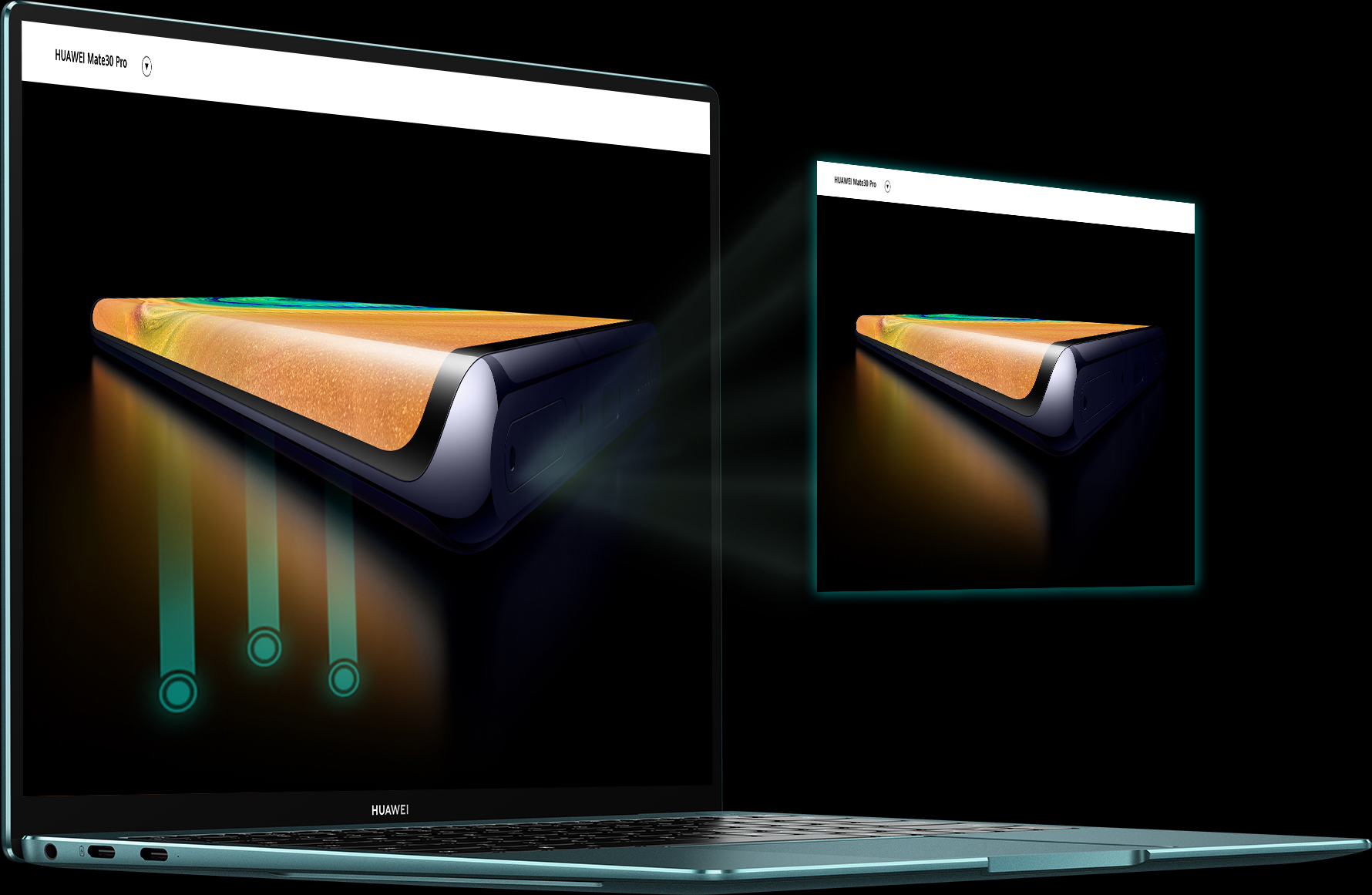
Speaking of entertainment, the MX250 allows you to take off some playful whims, as long as you don’t have too many pretensions. For example, GTA V manages to turn with dignity in 1920 X1280 pixels, although with low details. Dignifiedly it means over 30 fps, but rarely around 60, at least not in moments of action. Obviously reducing the resolution in HD things change. Overwatch instead makes more effort, and with the same resolution, you will not be sheltered from possible shots, which in such a game can make a difference. In its case, going down to resolutions around HD is more an obligation than a choice. In short, you play yes, but certainly not at all and certainly not without compromise.
The surface temperatures then become quite high under stress, exceeding 50 degrees in the central part of the keyboard, and making themselves felt a bit even on the typical directional keys, with the “D” in particular which could be annoying. This is a bit of a shame because inside temperatures are not too high, and it is the price to pay for a metal shell that conducts heat better. In fact, on the cores you will be on average around 70-80°, with possible short-term peaks above 90. Thermal throttling it makes itself felt, with a CPU that oscillates continuously between low and high frequencies, practically going from 800 MHz in times of maximum congestion up to 4.3 GHz in quieter ones. Only in the initial stages you can reach 4.9 GHz maximum frequency, but then you will not see them anymore.
It is not actually too penalizing, because in any case the CPU manages on average to run on frequencies higher than the base clock, however its behavior is not constant over time, and under intense and prolonged loads on the CPU alone the drop becomes more striking. The presence of a dedicated GPU helps in fact, where possible, because it allows you to give more breath to a processor that under stress goes a little in trouble, and the good news is that however, despite this continuous ups and downs of the frequencies, the temperatures they are such as to allow you to stress the system for a long time without too many worries, sure that in any case you will have a stable machine, however “busy”, and that it is not bringing its components to the thermal limit, which is certainly a good thing in terms of durability.
In short, also for Huawei MateBook X Pro 2020, the same consideration made for many other ultrabooks, that is compact, thin and light notebooks: there is far too much power, and too little “control”. You will really use your i7 only for short periods: to start the applications, for some calculations not so demanding as to occupy it for a long time, so much so that if under the hood there was the i5 variant you probably would not have noticed anything. And let’s not forget the speed of the SSD that we have already highlighted above, and which makes the presence of an i7 on this machine a bit more wasted.
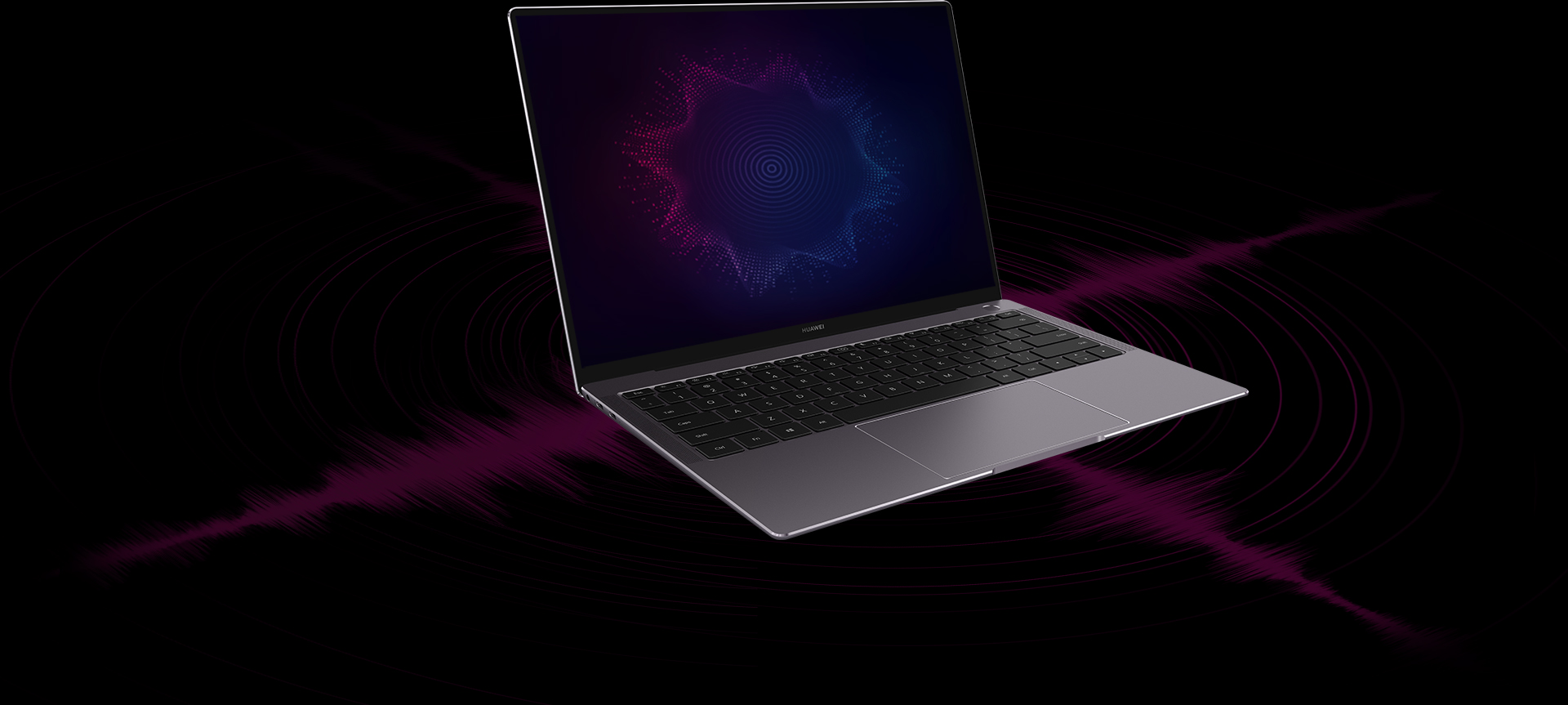
Do you want another example? The Cinebench R20 multi-core score, is particularly low, and as you can see it places its i7-10510U in the company of processors of a much lower rank, a sign of how much this machine does not give its best during rendering or in general, when you ask for a more lasting effort over time.
However, we make clear that nobody expected this Huawei MateBook X Pro 2020 to be a portable workstation, and in general the user experience remains excellent if you have in mind what its limits are. However, it remains a pity that to have such a satisfying overall use pleasure, you also have to pay for hardware that is not entirely necessary; but we will discuss this better in the price paragraph. At the end of the day, this really is a MacBook Pro (13) with Windows, and we say it in the best possible way; for better or for worse (and in the latter case, it is not exactly a compliment).
As on practically all Huawei laptops, there is then the annoying partitioning of the storage space, which sees 80 GB destined for Windows and the rest in a data partition. Do yourself a favor and join them immediately, the first time you start the machine. Among the positive things, however, Huawei’s management app remains, one of the best ever for a system integrity check and driver verification. And if you had a Huawei / Honor smartphone, you can also enjoy the benefits of Huawei Share, to synchronize your phone and PC with ease.
Note on the speakers: Good quality, with above-average sound clarity, even if the bass is still too few to be really satisfactory. In any case, it is an appreciated effort, which places this MateBook X Pro 2020 a step above most of the Windows competition. Regarding the “nose cam” instead, there is not much to add that we have not already said in the past: uncomfortable for the shooting position and for the fact of not being able to orientate it in the least, very valid on the privacy front; provided that this is a requirement for the common user, which we have some doubts about.
Screen
With the 3000 X 2000 pixels LTPS and Touch, the screen of Huawei MateBook X Pro 2020 is one of its strong points, although it is not without some weaknesses. High resolution, ideal aspect ratio for working, touch sensitive (it is not fundamental but it never hurts), and it is also quite bright. Around 450 nits peak, a non-astronomical value but still (unfortunately) not very common. Some reflections with the glossy coating is inevitable, but you will also be able to contrast them quite well with such brightness.
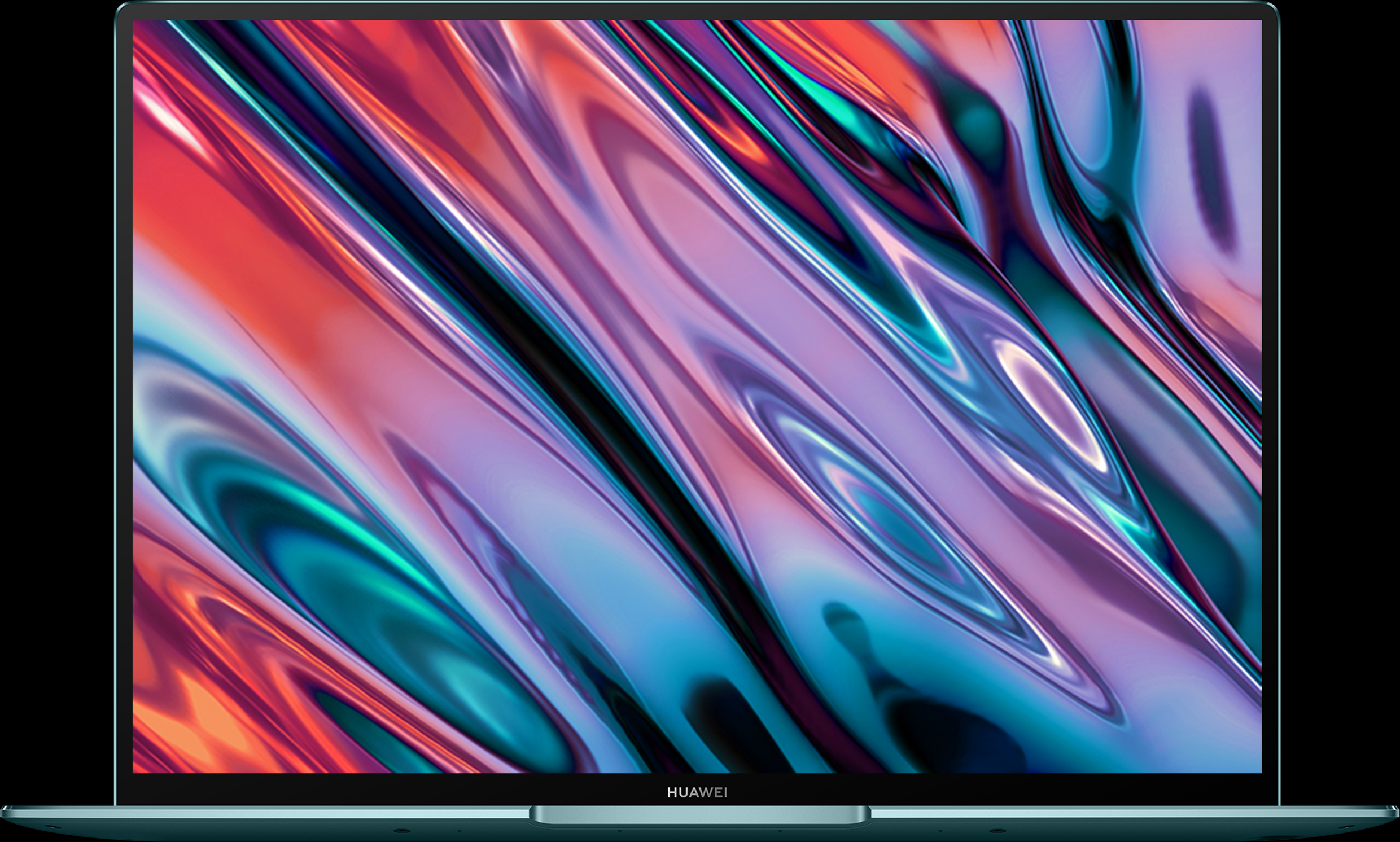
Among other things, there is a sensor that will adjust the backlight for you if you want. It is very conservative, not so much in the presence of good light, in which case it will make you really take advantage of all the brightness possible, but rather when you are in the presence of less strong light. The beauty is that, unlike other laptops with a brightness sensor, going to manually raise the backlight will not completely bypass the sensor. That is, even raising the backlight to the maximum, with the automatic adjustment active, it is not said that you can get 100% brightness. If you were in a place with low light, the sensor will not allow you to take advantage of all the 450 nits, unless you deactivate it precisely.
Backlight aside, the display is pleasant in most contexts, even if the colors are not too bright or saturated; on the contrary, the default profile is all in all fairly flat. On the one hand, we appreciated this “neutrality”, although unfortunately it is not accompanied by too precise a calibration. Analysis with CalMAN highlights a Delta E on grays of 5.5 and on colors of 3.43, accompanied by an average contrast (412: 1).
It is useless to worry about calibration, also because it is hardly uniform on all models that leave the factory (unless the manufacturer wants otherwise): those who need it will have to arm themselves with a colorimeter and calibrate it appropriately. It is a pity, however, that the sRGB coverage, according to our measurements, does not fully reach 100%; the same applies to AdobeRGB, which slightly exceeds 70%. In short, being a laptop for photographers and videomakers on the move, we would have hoped for greater attention on this front; or maybe it is we who are wrong in continuing to insist on photographers and videomakers?
Autonomy
Huawei MateBook X Pro 2020 has a 56 Wh battery, which is high enough for a laptop of this size and weight (just to continue with the comparison, Microsoft’s Laptop 3 has a 45 Wh). The autonomy that derives from it, however, is not entirely stellar. There is little to discuss the idle or in-game values, the 12 and a half hours of office use are more questionable. In my practice, made of navigation with 15-20 always open tabs, chats, a little photo editing and multimedia, I have not always passed the working day, of about 8 hours (with automatic brightness active). Yes, but it is not an absolute guarantee.
As always, the factors can be multiple, and although the automatic backlighting is very conservative, you will probably get better results on these sunny days by turning it off and being thrifty. MateBook X Pro 2020 is in short a laptop that can keep you company during a trip, but still needs a little attention on your part, and it is not exactly the battery champion that we would have hoped for.
- Idle: 19 hours and 52 minutes (minimum brightness, maximum energy saving)
- Gaming: 2 hours 11 minutes (maximum brightness, maximum performance)
- Office: (writing, browsing, video conference): 12 hours (brightness at 25, improved battery)
- Video: 10 hours and 28 minutes (brightness and audio at 25, improved battery)
Price
The price of MateBook X Pro 2020 has been unnecessarily complicated by Huawei. Moreover, it’s not available on US market, so far we share with you the price of Europe market. In Europe, there are only two versions available: 10th gen Core i5 with 512 GB for €1599 ($1814) and 10th gen Core i7 with 1 TB for €1899 ($2154). The official price among other things should be one hundred euros higher for both, and at the moment you will also have a Huawei Watch GT and a Bluetooth mouse as a gift.
In short, Huawei tries to make them more attractive with some gifts, but the reality of the facts is that what is missing is just a few more variations. Do they all need 16 GB of RAM? And why should the storage space be at least 512 GB? Between the two available models, without a doubt, we recommend the i5 version, for all the reasons discussed above.
Opinion
PROS
- Build quality
- Keyboard and touchpad
- 3:2 screen and bright enough
- Instant-on and fingerprint reader are an excellent match
CONS
- Price
- Thermal throttling under stress
- Only two variants available
- Calibration and coverage can be improved
Huawei MateBook X Pro is one of those (rare) notebooks that is truly a pleasure to use. Solid, relatively light, with one of the best keyboard and touchpad on the market, and a bright 3:2 screen, which is ideal for working. The instant on and the precise fingerprint reader are two pleasant additions that will make it open and close without worries, confident that it will be immediately ready for your commands as soon as you reopen the screen. The only regret is that you try to be more powerful than it can be, with a top hardware that not only is not fully exploited, but obviously also raises the price.


